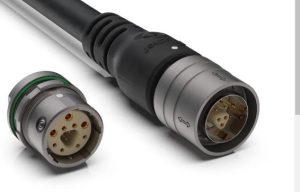What Is the Correct Way to Terminate Coax Cable?
Terminating coax cable correctly is essential to ensure reliable signal transmission and prevent signal loss or interference. This process involves a series of precise steps to prepare the cable and attach the appropriate connector securely. Here’s a detailed guide on the correct way to terminate coax cable, ensuring you achieve a professional and functional termination every time.

Tools and Materials Needed
Before beginning the termination process, ensure you have the following tools and materials:
- Coaxial cable stripper
- Coaxial cable cutter
- Crimping tool
- Coaxial connectors (F-type, BNC, or N-type)
- Soldering iron and solder (if using solder connectors)
- Heat shrink tubing or electrical tape
Step-by-Step Termination Process
1. Cutting the Cable
Start by cutting the coaxial cable to the desired length. Use a coaxial cable cutter to make a clean, straight cut. This ensures that the cable end is ready for stripping without any frayed edges.
2. Stripping the Cable
Strip the outer jacket of the cable using a coaxial cable stripper. Remove approximately 1 inch (25 mm) of the outer jacket, taking care not to damage the underlying shielding. Next, strip about 1/4 inch (6 mm) of the dielectric insulator to expose the inner conductor.
3. Preparing the Shield
Fold back the braided shield (also known as the shield) over the outer jacket. Make sure the shield is evenly distributed and not tangled or damaged. This step ensures proper grounding and reduces signal interference.
4. Attaching the Connector
Attach the appropriate connector to the cable. The method varies depending on the type of connector:
- Crimp-type connectors: Insert the cable into the connector until the inner conductor reaches the connector's center pin. Ensure the braided shield is in contact with the connector’s outer part.
- Solder-type connectors: Insert the cable into the connector and solder the inner conductor to the center pin. If necessary, solder the braided shield to the connector’s body for a secure connection.
5. Crimping the Connector
Use a crimping tool to secure the connector to the cable. Position the crimping tool over the crimp sleeve of the connector and apply firm, even pressure. This step ensures a solid mechanical and electrical connection.
6. Inspecting the Termination
Inspect the terminated cable thoroughly. Ensure the inner conductor is properly seated in the connector’s pin and that the braided shield is securely connected to the connector’s body. Check for any loose strands or irregularities that could affect signal quality.
7. Applying Protection
Apply heat shrink tubing or electrical tape over the termination for added protection. This helps to insulate the connection and protect it from environmental factors such as moisture and physical damage.
Ensuring High-Quality Termination
To ensure a high-quality termination, follow these best practices:
- Use high-quality connectors that match the specifications of your coaxial cable.
- Keep your work area clean to avoid contamination of the cable and connectors.
- Double-check measurements and cuts before finalizing the termination to prevent errors.
- Use the appropriate tools for each step to avoid damaging the cable.
The correct way to terminate coax cable involves meticulous preparation and precise execution. By following these steps, you can achieve a reliable and efficient connection, minimizing signal loss and maintaining the integrity of your coaxial cable system. Whether you are setting up a home entertainment system or a complex industrial network, mastering this process is essential for optimal performance and longevity of your communication systems.